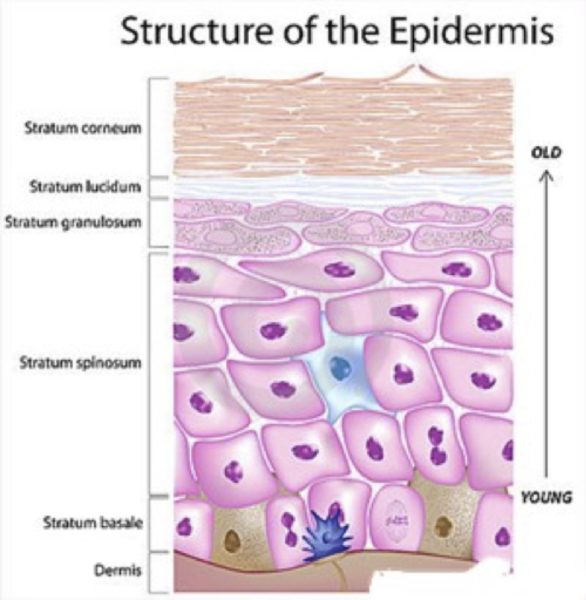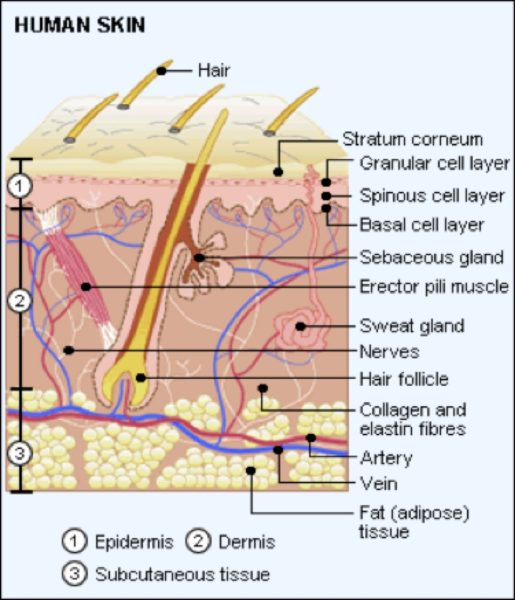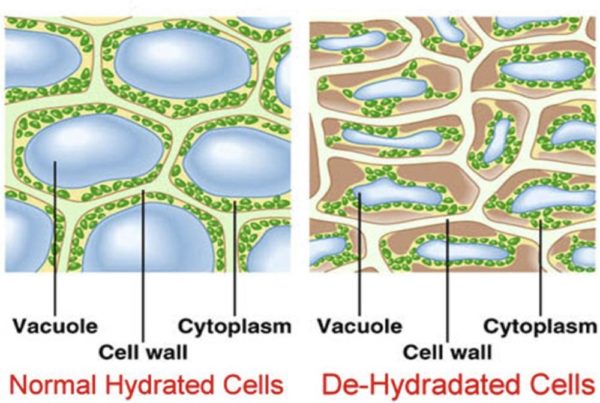CULLED FROM DR EBELE UGOCHUKWU'S LOVE YOUR SKIN SERIES ON BELLA NAIJA
Hello Everyone,
Last month we spoke about the light skin versus dark skin debate; perceptions, impressions, prejudice and sometimes the genuine need for skin lightening.
I promised this month to speak about the safe and not so safe ways to go about achieving lighter skin.
Let me start by repeating (it’s so important, it should be said many times) Skin Bleaching is NOT ACCEPTABLE. Not only is it dangerous, No one should desire to drastically change their natural skin colour; we should learn to love the complexion with which we were born and only pursue glowing flawless skin. Enhance not transform.
Since bleaching is not acceptable, I won’t go into too much detail about the dangerous methods and chemicals people use to achieve bleached skin. Not only so as not to give the hard headed light skin aficionados any ideas but also to not waste my word count quota talking about something you should not attempt in the first place.
However, I will try to concisely discuss safe skin lightening options, possible side effects and harmful skin lighteners to avoid.
First of all, it is important to note that the effects of all the options out there varies from individual to individual. What may lighten one person very quickly may have no effect on another what so ever.
Typically, this is especially true of individuals with reddish undertones to their skin(I will do a full brief in the future about skin undertones and how to identify your type), these type of individuals do not lighten easily no matter the product or concentration that they use on their skin.
Broadly, skin lightening can be classified under the following;
• Chemical Peels
• Skin lightening creams
• Laser treatment
Chemical Peels
The physiology behind chemical peels and laser treatments is the same. It is a type of deep exfoliation where the aim is to burn off the upper layer of the skin to reveal lighter skin beneath. Most often lightening agents are used in conjunction so that these agents penetrate deep and inhibit the production of melanin. There are various chemical peels available today; Glycolic acid, Lactic acid, Trichloroacetic acid (TCA) peels to name a few. These are naturally occurring acids that are applied on the skin in various concentrations depending on how deep the therapist wants to go. This procedure should be performed by a doctor or a qualified aesthetician. The side effects of this process include; pain, swelling, extended period of down time i.e. the time it takes for you to heal and crusting. There is also a risk of post treatment infection, scarring and most importantly post inflammatory hyperpigmentation (PIH) which people of colour are particularly prone to. So it hardly makes sense to get a peel to lighten your skin only to have it seriously darken afterwards. These peels are generally safe and have a high incidence of success for Caucasians but not so for us.
More recently, the VI peel came into the market. It is a more successful peel for people of colour and my personal favourite. It is much less painful, less downtime but unfortunately it is quite expensive; before the current recession a treatment costs about NGN50,000 and you need a minimum of three to get good results. The peel is not as deep as you may get with the others I have mentioned (hence less side effects) but the results are almost as good. You can get more information from www.viaesthetics.com, the company is very professional and will only sell their products to registered doctors and aestheticians.
Laser therapy involves the use of a machine that delivers high intensity laser rays to the skin surface achieving the same effect as chemical peels except that it can go deeper and can actually destroy melanin producing cells. The side effects and drawbacks include blistering in addition to those I already mentioned with chemical peels. It is also very expensive and requires multiple treatments. Again people with skin of colour being prone to PIH are not good candidates for this procedure.
Lightening cream is the more common and widespread method of achieving skin lightening. It is obviously safer and more affordable in most cases. The key is to know which ingredients to look out for. I strongly advise my clients to practise label reading and I must point out that the widespread trend of buying ‘mixed creams’ should not be followed by any enlightened person. Under no circumstance should anyone apply a preparation that you do not know the ingredients, I repeat UNDER NO CIRCUMSTANCE!!! In my practise, I have been known to mix the creams in order to aid my clients in achieving the right proportion of (safe and approved) ingredients but I usually do so right in front of them or I give them a sheet clearly listing out the ingredients.
In the recent past, Hydroquinone used to be the Gold standard for skin lightening. It has been in existence for many years and was used in most lightening creams that were available to buy over the counter (i.e. without a prescription). Higher concentrations (about 4% and higher) required a doctor’s prescription. However, it was eventually discovered that hydroquinone used over a long period of time led to kidney failure not to talk of the bluish dark discoloration that sometimes appeared after prolonged use; this condition is called ochronosis. Some researchers also postulate that hydroquinone has some carcinogenic (cancer causing) potential. It has since been banned from most countries especially in Asia the world leaders in skin lightening.
Naturally Occurring SAFE Lightening agents include; Arbutin, Mulberry extract, Bearberry extract, Kojic acid, Vitamin B3 and Vitamin C. Most good quality lightening creams currently in the market contain one or more of the ingredients above. It is important to remember that these ingredients can be very effective achieving up to 8 shades lighter depending on concentration and the skin type of the individual However, they will not turn a dark person into mullato. Efficacy is increased most especially with well exfoliated skin; I always illustrate with my story of a carpenter and his piece of wood. Imagine a carpenter applying bleach to a well sand papered piece of wood and again to a raw non sand papered piece of wood, which do you assume will absorb the product better and hence become lighter?
These ingredients are generally safe for lifelong use but sun protection is always key.
Sometimes, the lightening effect is not immediate (note that when using quality products it rarely is) so patience and consistency is also key.
Dangerous lightening agents in addition to Hydroquinone include Mercury and steroids. Steroid use for lightening is so widespread and rampant that it requires a separate brief on its own which I will do in the future. Steroids should not be used for this skin lightening and even when its use is indicated, it should be prescribed and monitored by a doctor. Improper use of Steroids leads to skin thinning, delayed wound healing, easily infected skin, discolouration of the skin, visible blood vessels, sores and boils, acne/eczema flare-ups, in extreme cases kidney, liver or nerve damage and hormonal dysfunction.
Mercury is highly dangerous and can cause all the side effects associated with steroids and may cause abnormalities in a new-born if used during pregnancy.
Your only protection is to read your labels, mercury will be listed as mercurous chloride, mercuric, mercurio or calomel and steroids as clobetasol propionate, betamethasone, fluocinonide and so many more, But you could always google any ingredient you are not sure of….we are living in a great age of information, no excuses for ignorance.
Finally, we need to talk about the Fads. There are many procedures and products that claim to give desired results in skin lightening such as the current trend of Gluthathione pills or injections for skin lightening. As I said earlier, with a click of a button you can access all kinds of information but sometimes it is necessary to have the guidance of a professional to help you wade through it all. Medicine is based on science; in the science world nothing is just accepted for face value, a hypothesis is put forward, then various experiments are carried out then the results are analysed and concluded. And you even still need your peers to review your results before you can publish your findings as fact. I happen to believe in homeopathy and natural remedies (many doctors don’t) so I am open minded enough to allow new ideas but scientific minded enough to evaluate and possibly experiment for myself before agreeing with the online conclusions. That said, I am investigating the Glutathione trend and will let you know my findings.
Generally speaking fads typically don’t work but in the spirit of an open mind, if there is anything you want me to look into feel free to leave a comment below.
In conclusion, if you feel the need to lighten your skin, do it safely otherwise proper exfoliation will keep your skin bright, fresh and youthful.
I am particularly proud of my skin care range which truly addresses all the needs of Ethnic skin with its Exfoliating and Lightening range however, there are many good brands out there that can also give you your desired results; read your labels and know the ingredients to look out for and the ones to avoid. Remember, damaged skin cannot be regenerated, replaced or surgically corrected.
Till next time, keep your best face forward!





